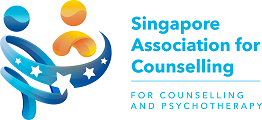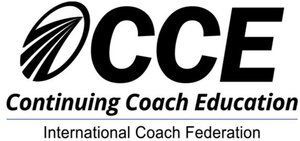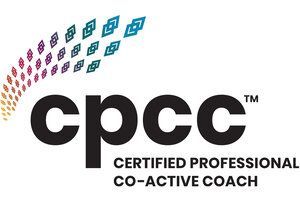Shattering Expectations & Confronting Imposter Syndrome in Professional Women

In the realm of professional achievement, women have made significant strides in breaking through the glass ceiling and ascending to leadership roles. Women already face significant challenges in rising to leadership roles, compounded by systemic factors such as gender bias, lack of representation, and stereotypes. These barriers are exacerbated by the prevalence of imposter syndrome, which becomes a damaging self-sabotaging barrier. This pervasive and insidious psychological phenomenon, characterised by feelings of self-doubt and a persistent fear of being exposed as a fraud, can hinder women's confidence, and impede their career advancement. In this article, we delve into the complexities of imposter syndrome, its impact on professional women, and strategies to overcome it.
Imposter syndrome, first identified by psychologists Pauline Clance and Suzanne Imes in 1978, is a psychological pattern whereby individuals doubt their accomplishments and have a persistent fear of being exposed as a fraud despite external evidence of competence. Research suggests that imposter syndrome disproportionately affects women, particularly in male-dominated industries and leadership positions. Imposter syndrome displays as a chronic sense of inadequacy despite evidence of competence and success. This phenomenon can manifest in various ways, including feelings of fraudulence, downplaying capabilities and attributing success to luck or external factors rather than their own abilities, and avoiding opportunities for fear of failure or being discovered as an imposter.
Imposter syndrome can have profound implications for professional women, hindering their career progression and overall well-being. Women experiencing imposter syndrome may exhibit diminished confidence, experience a perpetuating cycle of self-doubt, refrain from asserting themselves, and develop heightened stress and anxiety in the workplace. Furthermore, imposter syndrome contributes to the perpetuation of gender disparities in leadership and organisational representation, as women may self-select out of opportunities for advancement and leadership roles due to feelings of inadequacy.
Strategies for Overcoming Imposter Syndrome
Women must identify and challenge the inner critic that fuels imposter syndrome. Developing self-awareness and reframing negative thoughts can help counteract feelings of inadequacy.
· Identifying Negative Thought Patterns:
The first step in cognitive restructuring is to develop self-awareness by identifying the specific negative thoughts and beliefs associated with imposter syndrome. This may involve paying attention to recurring self-critical thoughts such as "I'm not good enough," "I don't deserve this success," or "I'm a fraud."
· Examining Evidence:
Once negative thought patterns are identified, the next step is to critically examine the evidence supporting these beliefs. Women experiencing imposter syndrome are encouraged to challenge the accuracy and validity of their negative self-assessments. They may ask themselves questions such as, "What evidence supports this belief?" or "Is there evidence that contradicts this belief?"
· Generating Alternative Perspectives:
Cognitive restructuring involves generating alternative, more balanced perspectives, or interpretations of situations. Women are encouraged to consider alternative explanations for their achievements and successes, recognizing their skills, efforts, and contributions. This process helps to counteract the tendency to attribute success to luck or external factors rather than personal competence.
· Replacing Irrational Thoughts:
After challenging negative beliefs and generating alternative perspectives, women can actively replace irrational thoughts with more realistic and positive ones. This may involve developing affirmations or positive self-statements that affirm their abilities and accomplishments. For example, replacing "I'm a fraud" with "I have worked hard to achieve my success and deserve recognition for my accomplishments" can help shift the focus from self-doubt to self-affirmation.
· Practice and Repetition:
Cognitive restructuring is a skill that requires practice and repetition. Women experiencing imposter syndrome may benefit from regularly practicing cognitive restructuring techniques, particularly in situations that trigger feelings of self-doubt or inadequacy. Over time, challenging negative thought patterns and replacing them with more adaptive beliefs can lead to lasting changes in self-perception and confidence.
Celebrate Achievements
To counter imposter syndrome, it is crucial for women to actively celebrate their achievements and recognise their contributions. Rather than attributing success solely to luck or external factors, women should acknowledge their role in their accomplishments and take pride in their abilities. One effective strategy is to keep a journal of achievements, where women can document their successes, big or small, along with the efforts and skills that contributed to them. This journal serves as a tangible reminder of competence, allowing women to reflect on their capabilities during moments of self-doubt. Moreover, celebrating achievements fosters a sense of accomplishment and reinforces positive self-perception, helping to counteract the negative beliefs perpetuated by imposter syndrome. By consciously acknowledging and celebrating their successes, women can cultivate a greater sense of self-worth and confidence, ultimately empowering them to overcome imposter syndrome and thrive in their professional endeavours.
Cultivate a Supportive Network
Building a supportive network of mentors, peers, and allies is an invaluable strategy for countering imposter syndrome among professional women. By surrounding themselves with individuals who provide validation and perspective, women can combat the feelings of self-doubt and inadequacy that often accompany imposter syndrome. Mentors, in particular, offer guidance, wisdom, and encouragement based on their own experiences navigating similar challenges in their careers. They can provide valuable insights and advice, helping women to gain clarity and confidence in their abilities. Peers who understand and empathise with imposter syndrome can offer reassurance and solidarity, creating a sense of belonging and normalising the experiences of self-doubt. Allies within the workplace can advocate for women's achievements and contributions, affirming their value and potential. By connecting with supportive individuals who understand the nuances of imposter syndrome, women can receive the encouragement and validation they need to overcome self-limiting beliefs and realise their full potential. This network not only provides emotional support but also offers practical guidance and perspective, empowering women to navigate challenges with resilience and confidence.
Embrace a Growth Mindset
Adopting a growth mindset is a powerful approach for countering imposter syndrome among professional women. At its core, a growth mindset entails believing that abilities and intelligence can be developed through dedication and hard work, rather than being fixed traits. By embracing this perspective, women can reframe challenges as opportunities for learning and personal growth, rather than insurmountable obstacles. Instead of interpreting setbacks as evidence of incompetence or failure, women with a growth mindset view them as natural parts of the learning process and opportunities to refine their skills and strategies.
Central to adopting a growth mindset is the recognition that mastery and resilience are cultivated through perseverance and resilience in the face of adversity. Women are encouraged to embrace setbacks as valuable learning experiences that contribute to their overall development and success. Each challenge becomes an opportunity to stretch beyond one's comfort zone, acquire new knowledge, and build resilience in the face of obstacles.
Furthermore, women can cultivate a growth mindset by reframing their interpretation of feedback and criticism. Rather than viewing feedback as a reflection of personal inadequacy, they can see it as constructive input for improvement and development. This mindset shift enables women to approach feedback with openness and curiosity, leveraging it as a tool for growth rather than a source of validation or judgment.
Skill Development and Mastery
Skill development and mastery play a crucial role in bolstering the confidence and competence of professional women, thereby mitigating feelings of imposter syndrome. Actively seeking opportunities for skill enhancement and mastery allows women to not only broaden their knowledge base but also refine their existing skill set, ultimately leading to improved performance and validation of their capabilities. Engaging in skill development initiatives empowers women to validate their competence through tangible achievements and accomplishments.
By actively pursuing opportunities for learning and growth, women can expand their repertoire of skills and knowledge, equipping themselves with the tools necessary to excel in their respective fields. This proactive approach not only enhances their professional competence but also instils a sense of empowerment and self-assurance. As women acquire new skills and deepen their expertise, they gain a greater sense of mastery over their roles and responsibilities, thereby reducing feelings of inadequacy and self-doubt associated with imposter syndrome.
Furthermore, skill development serves as a tangible form of validation, providing concrete evidence of women's abilities and contributions in the workplace. As women achieve proficiency in new areas or master challenging tasks, they receive external recognition and feedback that reinforces their sense of competence and diminishes imposter feelings. Moreover, honing existing skills allows women to showcase their expertise and make meaningful contributions to their organisations, further solidifying their confidence and sense of belonging.
Seek Professional Help
Psychotherapy and counselling offer tailored interventions to counter imposter syndrome, providing a structured framework for addressing underlying beliefs and behaviours contributing to feelings of inadequacy. Unlike self-help strategies, psychotherapy involves working with a trained therapist who can offer personalised guidance and support based on the individual's unique experiences and needs. Through psychotherapy, individuals can explore the root causes of their imposter syndrome, such as childhood experiences, societal pressures, or internalized beliefs, and develop coping strategies to challenge negative thought patterns and build self-confidence. Counselling, on the other hand, typically focuses on providing support and guidance through talk therapy sessions, offering a safe space for individuals to express their thoughts and emotions surrounding imposter syndrome and receive validation and encouragement. By addressing imposter syndrome in a therapeutic setting, individuals can gain insight into their self-perceptions and learn effective strategies for managing and overcoming feelings of inadequacy, ultimately leading to greater self-awareness, resilience, and personal growth.
In addition to psychotherapy and counselling, coaching is another valuable approach for addressing imposter syndrome and fostering personal growth. Coaching differs from therapy in that it typically focuses on goal-setting, skill development, and performance enhancement rather than delving into deep-rooted psychological issues. A coach works collaboratively with the individual to identify specific goals related to overcoming imposter syndrome and develops actionable strategies to achieve them.
Through coaching, individuals with imposter syndrome can receive targeted support and guidance to build confidence, challenge self-limiting beliefs, and develop effective coping mechanisms. Coaches provide accountability, encouragement, and feedback, empowering individuals to take proactive steps towards overcoming imposter syndrome and achieving their professional goals. Coaching sessions often involve techniques such as visualization, goal-setting, and cognitive-behavioural strategies tailored to the individual's unique needs and challenges. Coaches help individuals identify their strengths, recognise their achievements, and reframe negative thinking patterns that contribute to imposter syndrome. By providing a supportive and non-judgmental environment, coaches help individuals navigate through self-doubt and build resilience, ultimately empowering them to thrive in their careers and personal lives.
Imposter syndrome poses a significant barrier to the advancement and fulfillment of professional women. By understanding its manifestations and implementing strategies to overcome it, women can shatter the glass ceiling and thrive in their careers. Through self-awareness, support networks, and a commitment to personal growth, women can confront imposter syndrome head-on and realise their full potential. It's time to break free from the shackles of self-doubt and embrace the limitless possibilities that await beyond the glass ceiling.










